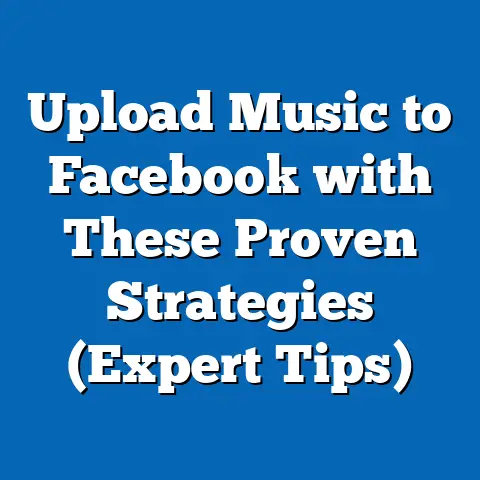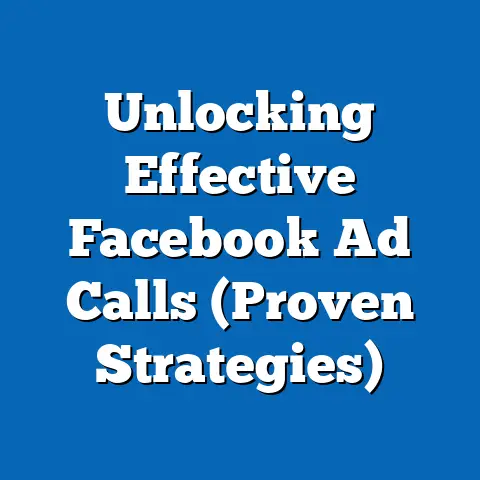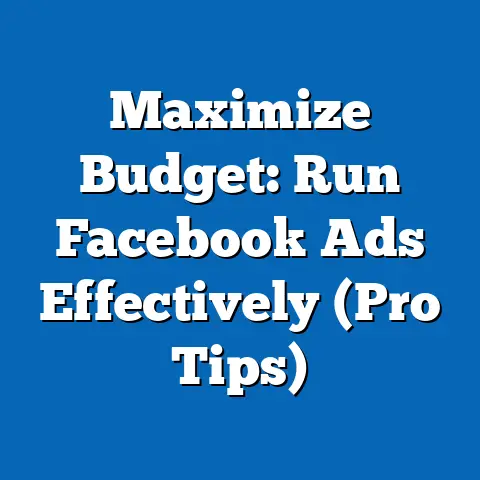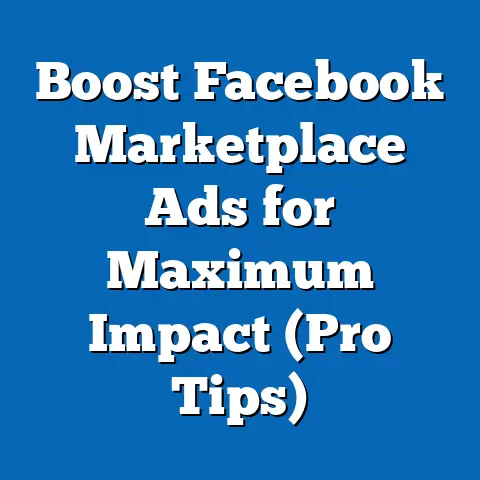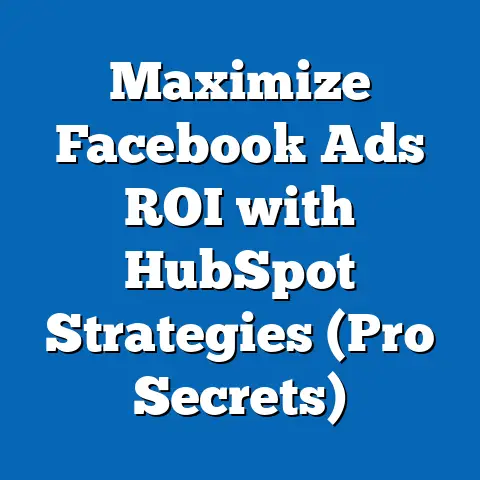Boost Facebook Ads Portfolio (Proven Strategies Inside)
In today’s world, where consumers are more conscious than ever about the impact of their choices, it’s no longer enough for businesses to simply offer great products or services. We, as marketers, need to demonstrate a commitment to sustainability and ethical practices. This shift is particularly evident in the advertising landscape, where brands are increasingly embracing eco-friendly messaging to resonate with environmentally aware consumers. I’ve seen firsthand how businesses that integrate sustainability into their Facebook ad campaigns not only enhance their brand reputation but also drive significant engagement and conversions.
The digital advertising landscape is constantly evolving, and Facebook ads are no exception. They offer a powerful platform to reach a vast audience, but to truly stand out, you need to align your advertising strategies with the values of your target demographic. This article isn’t just about boosting your Facebook Ads portfolio; it’s about doing so in a way that reflects your brand’s commitment to sustainability. We’ll dive into proven strategies that blend creativity, audience understanding, and data-driven decision-making, all while keeping eco-friendly principles at the core of your campaigns. Get ready to elevate your Facebook ads and make a positive impact on the environment.
Understanding the Facebook Ads Ecosystem
The Facebook Ads ecosystem is a complex but powerful tool for reaching your target audience. At its core, it’s a system that allows you to create and display ads to users based on their demographics, interests, and behaviors. Understanding the structure of Facebook Ads is the first step in creating a successful campaign.
Ad Types: Facebook offers a variety of ad types to suit different marketing goals. These include:
- Image Ads: Simple and effective, image ads are great for showcasing products or services with a compelling visual.
- Video Ads: Video ads are highly engaging and can tell a story, demonstrate a product, or convey a message in a dynamic way.
- Carousel Ads: Carousel ads allow you to display multiple images or videos in a single ad, perfect for showcasing a range of products or features.
- Collection Ads: Designed for mobile shopping, collection ads combine images and videos with product catalogs to create an immersive browsing experience.
- Instant Experience Ads: These ads provide a full-screen, interactive experience that loads quickly on mobile devices.
- Lead Ads: Designed to collect leads directly from Facebook, lead ads make it easy for users to sign up for newsletters, request information, or download resources.
Targeting Capabilities: One of the most significant advantages of Facebook Ads is its robust targeting capabilities. You can target users based on:
- Demographics: Age, gender, location, education, and more.
- Interests: Hobbies, interests, and pages they like on Facebook.
- Behaviors: Purchase history, device usage, and other online activities.
- Custom Audiences: Upload your own customer lists or website visitors to create targeted audiences.
- Lookalike Audiences: Expand your reach by targeting users who are similar to your existing customers.
Facebook Pixel: The Facebook Pixel is a small piece of code that you place on your website to track user actions, such as page views, purchases, and form submissions. This data is invaluable for optimizing your ad campaigns and measuring their effectiveness. It allows you to:
- Track Conversions: See which ads are driving the most conversions on your website.
- Optimize for Conversions: Tell Facebook to optimize your ads for users who are most likely to convert.
- Retarget Website Visitors: Show ads to users who have previously visited your website.
- Create Lookalike Audiences: Find new customers who are similar to your existing ones.
The Rise of the Eco-Conscious Consumer: As I mentioned earlier, a growing number of consumers are prioritizing sustainability and ethical practices. This presents a significant opportunity for businesses to align their advertising strategies with eco-friendly initiatives. By targeting eco-conscious consumers on Facebook, you can:
- Enhance Brand Reputation: Demonstrate your commitment to sustainability and build trust with consumers.
- Increase Engagement: Attract users who are passionate about environmental issues.
- Drive Conversions: Reach consumers who are more likely to support brands that align with their values.
Key Takeaway: Understanding the Facebook Ads ecosystem, from ad types to targeting capabilities and the importance of the Facebook Pixel, is crucial for creating effective campaigns. By recognizing the growing trend of eco-conscious consumers, you can tailor your strategies to resonate with this valuable audience.
Crafting Eco-Friendly Messaging
In the realm of Facebook advertising, crafting the right message is paramount, and this is especially true when targeting eco-conscious consumers. It’s not just about slapping a “green” label on your product; it’s about telling an authentic story that resonates with their values.
The Power of Authentic Storytelling: Consumers, particularly those who are environmentally aware, are drawn to brands that are transparent and genuine. They want to know the story behind your product or service – where it comes from, how it’s made, and what impact it has on the planet.
I’ve seen campaigns where brands shared the journey of their sustainable sourcing practices, showcasing the communities they support and the environmental benefits they contribute to. These stories often resonated deeply, resulting in higher engagement and brand loyalty. For example, a sustainable clothing brand might share videos of their organic cotton farmers or highlight the process of recycling fabrics to create new garments.
Examples of Successful Eco-Friendly Campaigns: There are numerous examples of brands that have successfully leveraged eco-friendly messaging on Facebook. One that sticks with me is a campaign by Patagonia, which often features stories of environmental activism and conservation efforts. Their ads not only showcase their products but also inspire viewers to take action and protect the planet.
Another example is a campaign by a zero-waste grocery store, which used Facebook ads to educate consumers about reducing plastic waste and promoting sustainable shopping habits. Their ads featured tips on how to reuse containers, compost food scraps, and support local farmers. These campaigns not only raised awareness but also drove traffic to their store and increased sales.
Tips for Creating Compelling Eco-Friendly Messaging:
- Focus on Transparency: Be open and honest about your sustainability efforts. Share details about your sourcing, manufacturing, and packaging practices.
- Highlight the Benefits: Clearly communicate the environmental benefits of your products or services. Explain how they help reduce waste, conserve resources, or protect ecosystems.
- Use Emotion: Connect with your audience on an emotional level by sharing stories of positive impact and inspiring viewers to take action.
- Incorporate Visuals: Use high-quality images and videos to showcase your eco-friendly initiatives. Visuals can help bring your message to life and make it more engaging.
- Call to Action: Encourage viewers to learn more, take action, or support your cause. Make it easy for them to get involved and make a difference.
The Importance of Transparency: In today’s world, consumers are savvy and skeptical. They can easily spot greenwashing – the practice of making false or misleading claims about the environmental benefits of a product or service. Transparency is essential for building trust with consumers and establishing credibility.
I remember working with a brand that initially hesitated to share details about their supply chain, fearing that it would reveal their competitive advantages. However, once they embraced transparency and shared the challenges and successes of their sustainability journey, they saw a significant increase in customer trust and loyalty.
Key Takeaway: Crafting eco-friendly messaging that resonates with your audience requires authenticity, transparency, and a focus on the benefits of your sustainable practices. By telling compelling stories and using visuals that connect with viewers on an emotional level, you can build trust and drive engagement.
Targeting the Right Audience
Effective Facebook advertising hinges on reaching the right people with the right message. When it comes to eco-friendly campaigns, this means identifying and targeting consumers who are genuinely interested in sustainability and environmental issues.
The Significance of Audience Segmentation: Audience segmentation is the process of dividing your target audience into smaller groups based on shared characteristics, interests, and behaviors. This allows you to tailor your messaging and targeting strategies to resonate with each segment, resulting in higher engagement and conversion rates.
I’ve seen campaigns where businesses achieved significantly better results by segmenting their audience based on factors such as:
- Environmental Interests: Users who have liked pages related to environmental organizations, sustainable living, or eco-friendly products.
- Purchasing Behavior: Consumers who have purchased eco-friendly products or supported sustainable businesses.
- Demographics: Individuals who live in areas with strong environmental awareness or who belong to specific age groups or income brackets.
Identifying and Targeting Eco-Conscious Consumers: Facebook’s audience insights tool is a powerful resource for identifying and targeting eco-conscious consumers. This tool provides valuable data on the demographics, interests, and behaviors of Facebook users, allowing you to create highly targeted audiences.
Here are some strategies for using Facebook’s audience insights tool to find eco-conscious consumers:
- Explore Interest Categories: Browse through the interest categories in Facebook’s audience insights tool to find topics related to sustainability, environmentalism, and eco-friendly products.
- Analyze Page Likes: Identify pages that are popular among eco-conscious consumers, such as environmental organizations, sustainable brands, or eco-friendly blogs.
- Examine Behaviors: Look for behaviors that indicate an interest in sustainability, such as purchasing eco-friendly products, participating in environmental events, or supporting sustainable causes.
Creating Custom and Lookalike Audiences: Custom audiences allow you to upload your own customer lists or website visitors to create targeted audiences on Facebook. Lookalike audiences, on the other hand, allow you to expand your reach by targeting users who are similar to your existing customers.
Here’s how to use custom and lookalike audiences for eco-friendly campaigns:
- Custom Audience from Email List: Upload your email list of customers who have purchased eco-friendly products or signed up for your sustainability newsletter.
- Custom Audience from Website Visitors: Create a custom audience of users who have visited pages on your website related to sustainability or eco-friendly products.
- Lookalike Audience: Create a lookalike audience based on your custom audience of eco-conscious customers to reach new users who are likely to be interested in your products or services.
The Importance of Testing: Testing different audience segments is crucial for finding the most engaged groups and optimizing your targeting strategies. A/B testing allows you to compare the performance of different audiences and identify which ones are most responsive to your ads.
I always advise clients to run multiple ad sets with different targeting options and track the results closely. This allows you to identify which audiences are driving the most conversions and adjust your targeting strategies accordingly.
Key Takeaway: Targeting the right audience is essential for the success of your eco-friendly Facebook ad campaigns. By using Facebook’s audience insights tool, creating custom and lookalike audiences, and testing different audience segments, you can reach consumers who are genuinely interested in sustainability and environmental issues.
Leveraging Visual Content
In the visually driven world of Facebook, compelling visuals are essential for capturing attention and conveying your message effectively. When it comes to eco-friendly campaigns, visuals can play a crucial role in highlighting your sustainability initiatives and connecting with your audience on an emotional level.
The Importance of Visuals: Visuals are processed much faster than text, making them a powerful tool for conveying your message quickly and effectively. In the context of eco-friendly campaigns, visuals can help you:
- Showcase Your Products: Highlight the sustainable features and benefits of your products or services.
- Tell Your Story: Share the journey of your sustainability initiatives and the positive impact you’re making on the environment.
- Connect with Your Audience: Evoke emotions and inspire viewers to take action.
Tips for Creating Eye-Catching Graphics and Videos:
- Use High-Quality Images: Invest in professional photography or use high-resolution stock images that showcase your products or sustainability initiatives in the best possible light.
- Create Engaging Videos: Videos are highly engaging and can tell a story, demonstrate a product, or convey a message in a dynamic way.
- Incorporate Natural Elements: Use natural elements such as plants, landscapes, and wildlife to create a sense of connection with the environment.
- Use Color Psychology: Choose colors that evoke feelings of sustainability, such as green, blue, and brown.
- Keep It Simple: Avoid cluttering your visuals with too much text or distracting elements. Focus on conveying your message clearly and concisely.
User-Generated Content and Testimonials: User-generated content (UGC) and testimonials can be incredibly powerful for creating authenticity and building trust with your audience. UGC refers to content created by your customers or followers, such as photos, videos, or reviews. Testimonials are statements from satisfied customers that vouch for the quality and effectiveness of your products or services.
I’ve seen campaigns where brands successfully leveraged UGC by:
- Running Contests: Encouraging customers to submit photos or videos of themselves using their products in sustainable ways.
- Featuring Customer Stories: Sharing stories of how their products have helped customers live more sustainably.
- Highlighting Positive Reviews: Showcasing positive reviews and testimonials from satisfied customers.
Tools and Resources for Creating High-Quality Visual Content: There are numerous tools and resources available for creating high-quality visual content for your Facebook ads. Some popular options include:
- Canva: A user-friendly design tool that offers a wide range of templates, graphics, and fonts for creating stunning visuals.
- Adobe Creative Cloud: A suite of professional design tools that includes Photoshop, Illustrator, and Premiere Pro.
- iMovie and Filmora: Video editing software that allows you to create engaging videos for your Facebook ads.
- Pexels and Unsplash: Websites that offer free, high-resolution stock photos and videos.
Key Takeaway: Visual content is essential for capturing attention and conveying your message effectively in your eco-friendly Facebook ad campaigns. By using high-quality images and videos, incorporating natural elements, leveraging user-generated content, and utilizing the right tools and resources, you can create visuals that resonate with your audience and drive engagement.
Budgeting and Bidding Strategies
Setting the right budget and choosing the appropriate bidding strategy are critical for maximizing the ROI of your Facebook ad campaigns. When it comes to eco-friendly campaigns, it’s essential to allocate your budget strategically and bid effectively to reach your target audience and achieve your marketing goals.
Setting an Appropriate Budget: Determining the right budget for your eco-friendly ad campaigns depends on several factors, including:
- Your Marketing Goals: Are you trying to increase brand awareness, drive traffic to your website, or generate leads?
- Your Target Audience: How large is your target audience, and how competitive is the market?
- Your Ad Creative: How engaging and effective is your ad creative?
- Your Bidding Strategy: Which bidding strategy are you using, and how much are you willing to pay per click or conversion?
As a general guideline, I recommend starting with a small budget and gradually increasing it as you see positive results. This allows you to test different targeting options, ad creatives, and bidding strategies without risking a large amount of money.
Different Bidding Strategies: Facebook offers several bidding strategies to choose from, each designed to achieve different goals. Some of the most common bidding strategies include:
- Lowest Cost: Facebook automatically bids to get you the most results for your budget.
- Cost Cap: You set a target cost per result, and Facebook bids to achieve that cost while spending your budget.
- Bid Cap: You set a maximum bid amount, and Facebook bids up to that amount to show your ads to the right people.
- Target Cost: Facebook aims to achieve a specific cost per result, but may spend more or less on any given day.
- Value Optimization: Facebook bids to get you the most value from your ads, based on the value of your conversions.
The best bidding strategy for your eco-friendly ad campaigns will depend on your marketing goals and the specific characteristics of your target audience. For example, if you’re trying to increase brand awareness, you might choose the Lowest Cost bidding strategy to reach as many people as possible. On the other hand, if you’re trying to generate leads, you might choose the Cost Cap or Target Cost bidding strategy to achieve a specific cost per lead.
Monitoring Ad Spend: Monitoring your ad spend is essential for ensuring that you’re getting the most out of your budget. Facebook’s Ads Manager provides a variety of metrics that you can use to track your ad spend, including:
- Spend: The total amount of money you’ve spent on your ads.
- Impressions: The number of times your ads have been shown.
- Reach: The number of unique people who have seen your ads.
- Clicks: The number of times people have clicked on your ads.
- Conversions: The number of times people have taken a desired action on your website, such as making a purchase or filling out a form.
By tracking these metrics, you can identify which ads are performing well and which ones are not. You can then make adjustments to your targeting options, ad creatives, or bidding strategies to improve your results.
Key Takeaway: Budgeting and bidding strategies are crucial for maximizing the ROI of your eco-friendly Facebook ad campaigns. By setting an appropriate budget, choosing the right bidding strategy, and monitoring your ad spend, you can reach your target audience and achieve your marketing goals efficiently.
Analyzing and Optimizing Ad Performance
The final step in boosting your Facebook Ads portfolio is analyzing your ad performance and making data-driven optimizations. Tracking key performance indicators (KPIs) and using the insights you gain to refine your targeting, messaging, and creative can significantly improve your results.
Tracking Key Performance Indicators (KPIs): KPIs are metrics that measure the success of your ad campaigns in relation to your marketing goals. Some of the most important KPIs to track for eco-friendly Facebook ads include:
- Reach and Impressions: These metrics measure the number of people who have seen your ads and the number of times your ads have been shown.
- Click-Through Rate (CTR): This metric measures the percentage of people who have clicked on your ads after seeing them.
- Conversion Rate: This metric measures the percentage of people who have taken a desired action on your website, such as making a purchase or filling out a form, after clicking on your ads.
- Cost Per Acquisition (CPA): This metric measures the cost of acquiring a new customer or lead through your ad campaigns.
- Return on Ad Spend (ROAS): This metric measures the revenue generated from your ad campaigns in relation to the amount of money you’ve spent.
By tracking these KPIs, you can gain valuable insights into the performance of your ad campaigns and identify areas for improvement.
Tools and Strategies for Analyzing Ad Performance: Facebook’s Ads Manager provides a variety of tools and strategies for analyzing your ad performance, including:
- Facebook Insights: This tool provides detailed data on the demographics, interests, and behaviors of the people who are seeing and interacting with your ads.
- A/B Testing: This strategy involves creating multiple versions of your ads with different targeting options, ad creatives, or bidding strategies and comparing their performance to see which ones perform best.
- Attribution Modeling: This strategy involves assigning credit to different touchpoints in the customer journey to understand which ads are contributing most to conversions.
Actionable Tips for Optimizing Ads: Based on the data you collect, you can make a variety of optimizations to improve the performance of your ads, including:
- Refine Your Targeting: Adjust your targeting options to reach a more relevant audience.
- Improve Your Ad Creative: Experiment with different images, videos, and headlines to see which ones resonate best with your audience.
- Adjust Your Bidding Strategy: Change your bidding strategy to optimize for conversions or value.
- Optimize Your Landing Page: Ensure that your landing page is relevant to your ad and provides a seamless user experience.
I’ve seen situations where simple tweaks to ad copy or visuals, based on data from A/B tests, led to significant improvements in conversion rates. It’s all about being data-driven and continuously refining your approach.
Key Takeaway: Analyzing and optimizing your ad performance is essential for maximizing the ROI of your eco-friendly Facebook ad campaigns. By tracking key performance indicators, using Facebook’s Ads Manager, and making data-driven optimizations, you can continuously improve your results and achieve your marketing goals.
Conclusion
Boosting a Facebook Ads portfolio requires a blend of creativity, audience understanding, and data-driven decision-making, all while maintaining a commitment to eco-friendly principles. By understanding the Facebook Ads ecosystem, crafting authentic eco-friendly messaging, targeting the right audience, leveraging visual content, setting appropriate budgets, and analyzing your ad performance, you can create effective campaigns that resonate with environmentally aware consumers and drive positive results.
I encourage you to implement the strategies shared in this article to not only enhance your advertising efforts but also contribute positively to the environment. By embracing sustainability in your Facebook ad campaigns, you can build a stronger brand, connect with a passionate audience, and make a difference in the world. So, go ahead, take the leap, and watch your Facebook Ads portfolio flourish while contributing to a more sustainable future.

